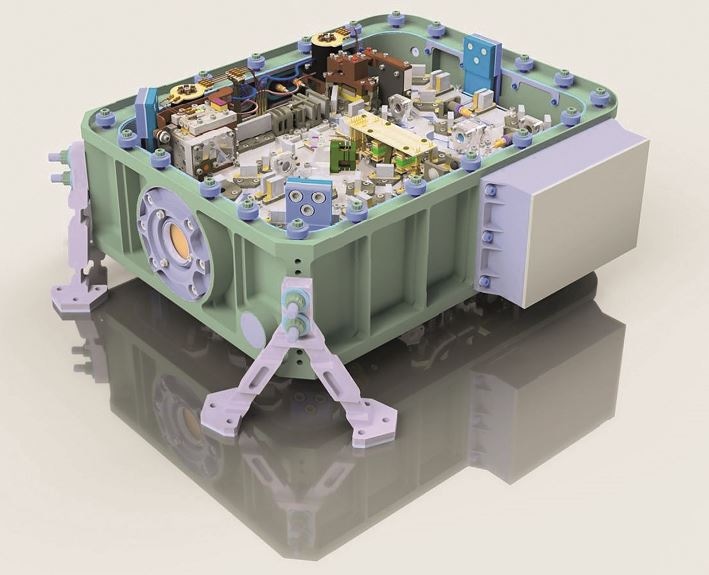Jun 20 2017
Heatwaves in the Arctic, longer periods of vegetation in Europe, severe floods in West Africa – starting in 2021, scientists want to explore the emissions of the greenhouse gas methane with the German-French satellite MERLIN. This is made possible by a new robust laser system of the Fraunhofer Institute for Laser Technology ILT in Aachen, which achieves unprecedented measurement accuracy.
 The LiDAR system for the MERLIN mission incorporates all components from the pump laser to the frequency conversion in a particularly compact design suitable for space operation. (Credit: Fraunhofer ILT, Aachen.)
The LiDAR system for the MERLIN mission incorporates all components from the pump laser to the frequency conversion in a particularly compact design suitable for space operation. (Credit: Fraunhofer ILT, Aachen.)
Methane is primarily the result of the decomposition of organic matter. The gas has a 25 times greater warming potential than carbon dioxide, but is not as common in the earth’s atmosphere – so far. For some years now, the methane concentration has been increasing. In order to get to the root causes, it is important to measure where and how much methane is released into the earth’s atmosphere.
However, it is not possible to measure the emission values at high resolution using conventional measurement technology. Currently, satellite-based systems use sunlight to detect methane. Therefore, it is only possible to measure greenhouse gases on the side of the earth facing the sun and when the skies are free of clouds. The absorption of light enables an assessment to be made on the molecules present in the air.
Methane can be measured anywhere and anytime
»Our laser-based measurement system does not need sunlight, so you can use it to measure anytime and anywhere«, says Dr. Jens Löhring, who has been co-developing the new laser technology at the Fraunhofer ILT in Aachen. »The aim of this mission is to provide climate scientists with accurate global data on methane distributions that can be used to feed their climate models. This makes it possible to better predict climate change«.
Scientists at Fraunhofer ILT are therefore developing a laser that can send very precise single-frequency light pulses to the earth. This method also uses light absorption to measure if and in which concentration methane is present – in comparison to methane measurements using sunlight, this is more precise. The laser pulse can be precisely adjusted to the absorption line of methane at a predetermined wavelength. »Each gas has its spectral fingerprint. Depending on its specific wavelength, it absorbs particularly well or bad. It is important that other gases do not have an absorption line at this wavelength so that the measurement is not falsified«, Löhring explains. The new laser is an essential component of the LiDAR system (Light detection and ranging) on board of MERLIN.
Maintenance-free laser despite heavy use
In order for the laser to function smoothly and maintenance-free during its three-year long space mission, it must be able to withstand shocks and vibrations as well as extreme temperature variations between minus 30 and plus 50 degrees Celsius. »We have developed optomechanical components for the laser, such as mirror and lens holders and so on, that meet these requirements and maintain their very precise settings«.
Another challenge is to keep the air clean in the housing around the laser. »Adhesives can contaminate the air, and tiny particles can break free and deposit themselves on the mirrors and destroy the optical components. For this reason the laser has been entirely soldered and screwed. This is a completely new technology that makes the system even more robust and, therefore, also interesting for numerous applications in industry and production engineering«, says Löhring.
The MERLIN-LiDAR-Modell will be on display at the joint Fraunhofer booth in Hall A2 Booth 431 at the LASER World of Photonics 2017 in Munich, Germany.
The project is funded by the Federal Ministry of Economics and Energy (BMWi) on behalf of the German Aerospace Center (DLR).